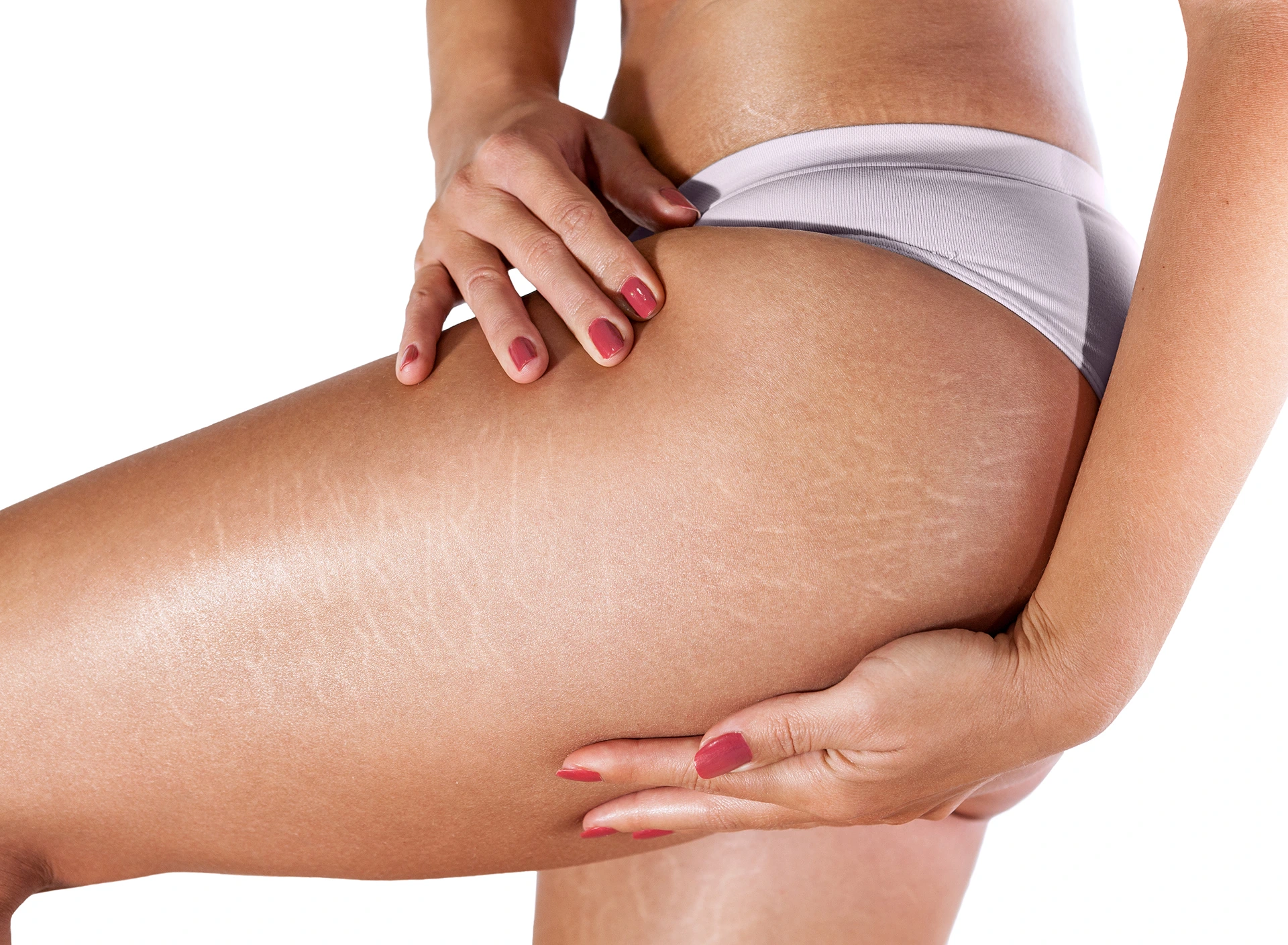Achieving Smooth, Confident Skin: All You Need to Know About Laser Hair Removal and Stretch Marks
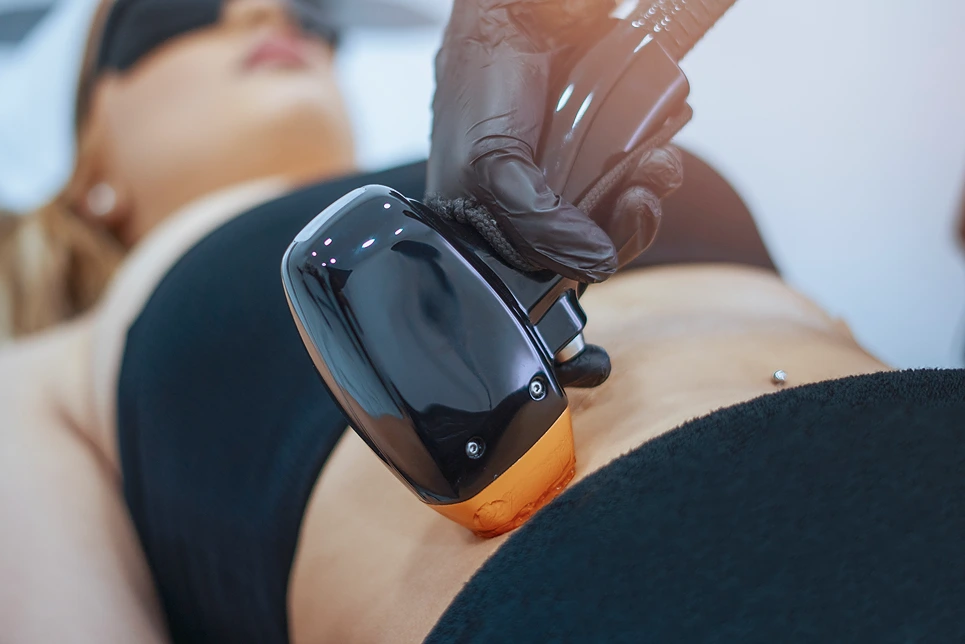
You want smooth, hair-free skin. No more nasty nicks from shaving or embarrassing stubble. Just soft, touchable areas that give you confidence.
But what about those pesky stretch marks? You’ve worked hard to reduce their appearance, but the hair growing on top keeps revealing them.
We get it. You want laser hair removal that covers all areas – stretch marks and all. No more hiding behind clothing to conceal what you want gone.
At Ethos Spa, we are redefining confidence through precision laser hair removal. Your journey to smooth, beautiful skin starts here.
What Are Stretch Marks?
First, let’s cover the basics.
Stretch marks, also called striae, are a common skin condition that affects men and women of all ages and ethnicities. They present as indented streaks on the skin with a different texture and color from surrounding skin.
Stretch marks form when our skin stretches rapidly due to growth spurts, weight changes, or pregnancy. This stretching causes the collagen and elastin fibers that give our skin its strength and elasticity to rupture and break down.
The marks can appear reddish, purple, or bright pink initially. Over time, they fade to a silvery-white color. Stretch marks are harmless and non-painful, but many seek ways to reduce their appearance for cosmetic reasons.
They most frequently occur on the abdomen, hips, thighs, breasts, upper arms, and buttocks. Up to 90% of women develop stretch marks during or after pregnancy. But men can get them too from rapid muscle growth or weight gain.
Assessing Your Stretch Marks
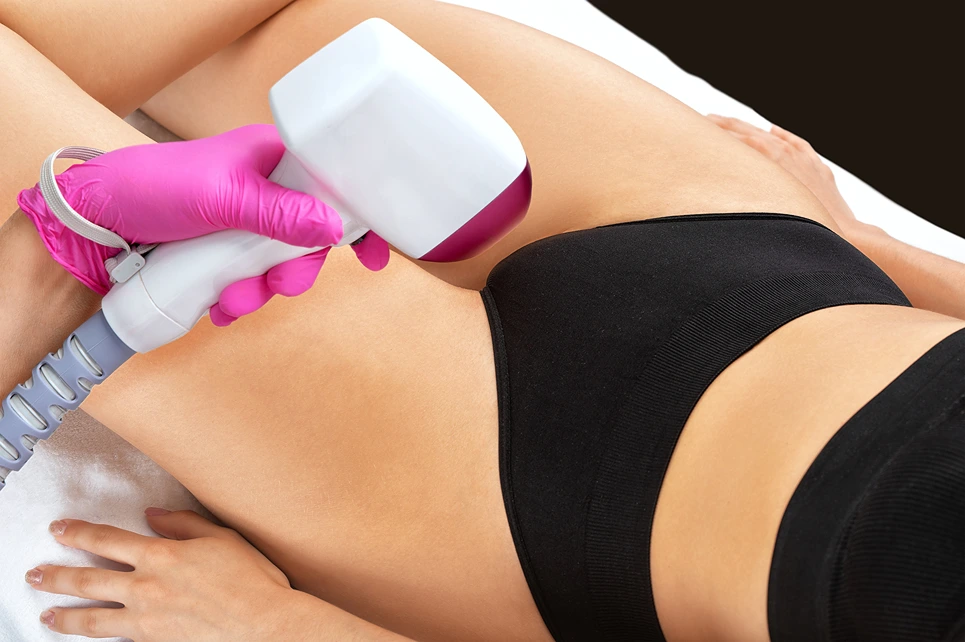
Early stretch marks appear reddish or purplish. Over time, they fade to a silvery hue. The surrounding skin may feel extra sensitive or itchy as marks develop.
For laser hair removal, our experts evaluate:
- Age of stretch marks – newer ones may incur higher risk with treatment
- Color of stretch marks – redness suggests inflammation to avoid aggravating
- Location and texture – some areas more delicate than others
- Skin type and sensitivity – determines laser wavelength and settings
- Hair coarseness – finer hair needs lower intensity
By carefully assessing these factors, we design a customized laser hair removal plan for your stretch marks.
Remember, our goal is not to treat the marks themselves, but to safely remove unwanted hair revealing them. For reducing the stretch marks’ appearance, we can recommend dedicated solutions.
Now let’s explore some common questions about laser hair removal over stretch marks.
Can You Get Laser Hair Removal Over Stretch Marks?
Here at Ethos Spa, laser hair removal is one of our core services. Our state-of-the-art lasers use focused light energy to selectively target and disable the hair follicle. But what about using it on stretch marks?
The simple answer is yes, laser hair removal can generally be performed safely over stretch marks. The laser targets only the pigment in the hair follicle itself, not the surrounding skin. So the presence of stretch marks does not interfere with the hair removal process.
However, it’s also important to have realistic expectations about what laser hair removal can and cannot do for stretch marks. Let’s dig into those details now.
Does Laser Hair Removal Get Rid of Stretch Marks?
A common misconception is that the laser will eliminate stretch marks in the process of removing unwanted hair.
However, this is not the case. Laser hair removal systems are designed to target melanin in the hair follicle only, not to treat scar tissue deeper in the skin.
That said, some secondary effects of the laser exposure may subtly improve the appearance of stretch marks. The heat and light energy stimulates new collagen production, which helps smooth and soften skin texture over time. Increased collagen can gradually make stretch marks less noticeable.
But it’s important to note that these improvements are relatively minor in comparison to proven stretch mark treatments. Laser hair removal alone will not completely remove or erase existing stretch marks. The best approach is to pursue dedicated stretch mark removal options in conjunction with laser hair removal for optimal aesthetic results.
How Can Laser Hair Removal Help With Stretch Marks?
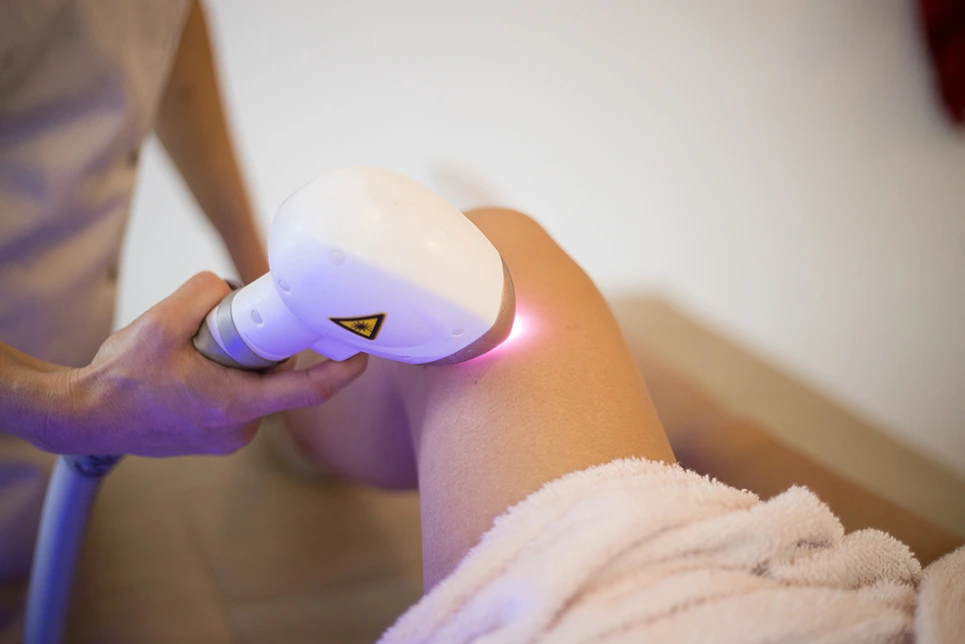
To expand on the previous point, laser hair removal provides little direct stretch mark treatment. However, you may see minor improvements in texture, color, and appearance over a course of treatments.
Here’s a quick rundown of the marginal effects laser hair removal may have:
- Increased Skin Elasticity – Collagen stimulation from laser exposure helps improve overall skin elasticity and resilience. This can subtly smooth and soften the appearance of stretch marks.
- Evening of Skin Tone – The laser light can gradually fade reddish or purple discoloration from new stretch marks. This helps them blend in better with surrounding skin tone.
- Smoothing of Texture – Collagen renewal evens out the indented, scarred texture to some degree. Stretch marks become slightly less raised or sunken over time.
- Reducing Appearance – These combined subtle effects result in stretch marks looking somewhat less noticeable. But they do not remove them entirely.
Overall, laser hair removal offers only minimal improvements to stretch marks. For more significant reduction in their appearance, we recommend exploring dedicated clinical stretch mark treatments.
Professional Laser Stretch Mark Removal Options
For significantly reducing the appearance of stretch marks, professional clinical treatments are required to address the underlying scar tissue.
Here are some of the most effective options we recommend exploring:
| Treatment | Description |
| Fractional Laser Skin Resurfacing | Precisely controls laser heat into the skin to stimulate collagen and remodeling. |
| Microneedling | Creates micro-injuries with small needles to induce collagen growth and healing. |
| Microdermabrasion | Gently abrades the skin’s surface to smooth texture and build collagen. |
| Chemical Peels | Applies medical-grade acids to remove damaged skin layers and trigger collagen regeneration. |
| Dermabrasion | Uses a wand to abrade surface skin and smooth scars. |
For optimal improvements, you’ll likely need a series of 5-6 treatments combining different modalities like microneedling, resurfacing, and chemical peels. The procedures can be performed in conjunction with laser hair removal to enhance overall results.
Always consult an experienced board-certified provider to determine the right clinical options for your stretch mark concerns and goals.
Laser Hair Removal and Stretch Marks: Your Path to Confidence
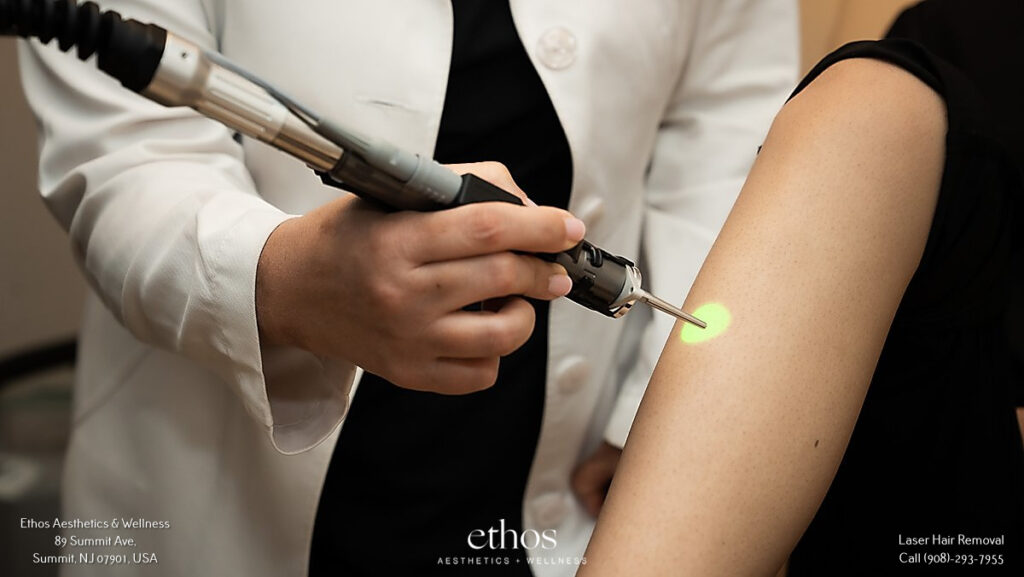
In most cases, laser hair removal can be safely performed over stretch marks. When done properly, it eliminates unwanted hair that may be covering these areas.
Yet laser hair removal does not treat the stretch marks themselves. For textural and color improvements, additional options should be explored.
Together, we can blend laser hair removal for unveiling areas with other treatments to reduce stretch mark visibility. Microneedling, microdermabrasion and targeted resurfacing are tailored to your concerns.
At Ethos Spa, your satisfaction means everything to us. Let’s map your unique path to smooth skin and unstoppable confidence.
You deserve to feel comfortable in your own skin – stretch marks or not. Ready to start your laser hair removal journey? We’re here to help.

